Savvas G. Hatzikiriakos, Kalman B. Migler9780824753863, 0824753860
Polymer Processing Instabilities: Control and Understanding summarizes experimental observations of flow instabilities that occur in numerous processing operations such as extrusion, injection molding, fiber spinning, film casting, and film blowing for a wide range of materials, including most commodity polymers that are processed as melts at temperatures above their melting point or as concentrated solutions at lower temperatures. The book first presents the fundamental principles in rheology and flow instabilities. It relates the operating conditions with flow curves, the critical wall shear stress for the onset of the instabilities, and new visualization techniques with numerical modeling and molecular structure. It reviews one-dimensional phenomenological relaxation/oscillation models describing the experimental pressure and flow rate oscillations, analyzes the gross melt fracture (GMF) instability, and examines how traditional and non-traditional processing aids eliminate melt fracture and improve polymer processability. It supplies a numerical approach for the investigation of the linear viscoelastic stability behavior of simplified injection molding flows and examines a newly discovered family of instabilities that occur in co-extrusion.
Polymer Processing Instabilities: Control and Understanding is unique in that it fills a gap in the polymer processing literature where polymer flow instabilities are not treated in-depth in any book. It summarizes state-of-the-art developments in the field, particularly those of the last ten years, and contains significant data based on this research.
Table of contents :
Polymer Processing Instabilities Control And Understanding……Page 1
Chemical Industries……Page 2
Preface……Page 11
Contents……Page 14
Contributors……Page 16
1.1 POLYMER FLOW INSTABILITIES……Page 18
Contents……Page 0
1.2 PART A: THE NATURE OF POLYMERIC FLOW……Page 19
1.3 PART B: MELT FRACTURE IN EXTRUSION……Page 21
1.4.1 Draw Resonance in Film Casting……Page 23
1.4.2 Fiber Spinning Instabilities……Page 24
1.4.3 Film Blowing Instabilities……Page 25
1.4.4 Coextrusion and Interfacial Instabilities……Page 26
1.4.5 Injection Molding and Tiger Stripes Instability……Page 27
REFERENCES……Page 28
2.1 RHEOLOGICAL BEHAVIOR OF MOLTEN POLYMERS……Page 30
2.2 VISCOELASTICITY—BASIC CONCEPTS……Page 31
2.3 LINEAR VISCOELASTICITY……Page 32
2.4 VISCOSITY……Page 35
2.4.1 Dependence of Viscosity on Shear Rate, Temperature, and Pressure……Page 36
2.5 NORMAL STRESS DIFFERENCES……Page 37
2.6 TRANSIENT SHEAR FLOWS USED TO STUDY NONLINEAR VISCOELASTICITY……Page 38
2.7 EXTENSIONAL FLOWS……Page 39
2.8 DIMENSIONLESS GROUPS GOVERNING THE BEHAVIOR OF VISCOELASTIC FLUIDS……Page 41
2.9 EXPERIMENTAL METHODS IN RHEOLOGY—RHEOMETRY……Page 44
2.9.1 Rotational Rheometers……Page 45
2.9.2 Sliding Plate Rheometers……Page 46
2.9.3 Capillary and Slit Rheometers……Page 47
2.9.4 Extensional Rheometers……Page 48
2.10.1 Introduction……Page 50
2.10.2.1. Integral Continuum Models……Page 51
2.10.2.2. Differential Continuum Models……Page 54
2.10.3 Constitutive Equations from Tube Models……Page 55
2.10.4 Mathematical vs. Hydroelastic Instability……Page 56
2.11 SUMMARY……Page 57
REFERENCES……Page 58
3.1 INTRODUCTION……Page 60
3.2.1 Conservation and Constitutive Equations……Page 62
3.3.1 Linear Stability Analysis……Page 67
3.4 POLYMER PROCESSING FLOWS……Page 68
3.4.1.1. Flow in a Contraction……Page 69
3.4.2.2. Roll Coating……Page 78
3.4.2.3. Wire Coating……Page 82
3.4.2.1. Calendering……Page 75
3.4.2.4. Coextrusion……Page 83
3.5 CONCLUSIONS……Page 85
REFERENCES……Page 86
4.1 INTRODUCTION……Page 89
4.2.1 Gap-Dependent Measurements in Planar Couette Shear Flow……Page 92
4.2.2 Gap-Dependent Measurements in Torsional Shear Flow……Page 98
4.2.3 Interfacial Slip Measurements in Pressure-Driven Shear Flow……Page 102
4.3.1 Overview……Page 107
4.3.2 Fluorescence Recovery of Fringe Patterns After Photobleaching……Page 108
4.3.3 Velocimetry Using Particle Tracers……Page 110
4.3.4 Other Direct Methods……Page 116
4.4.1 Overview……Page 117
4.4.2 Slip by Adhesive Failure……Page 119
4.4.3 Slip by Cohesive Failure……Page 121
REFERENCES……Page 130
5.1 INTRODUCTION……Page 137
5.1.1 The Flow Curve……Page 138
5.1.2 Introduction to Sharkskin……Page 141
5.2 CHARACTERIZATION OF SHARKSKIN……Page 142
5.3.1 High-Energy Walls……Page 146
5.3.2 Wall Material, Surface Energy, and Slippage……Page 148
5.4.1 Die Geometry……Page 151
5.4.2 Temperature……Page 152
5.4.3 Molecular Structure……Page 153
5.5 SITE OF INITIATION……Page 154
5.6 MEASUREMENT OF LOCAL STRESS FIELDS VIA BIREFRINGENCE……Page 156
5.7 NUMERICAL SIMULATION OF STRESS AND VELOCITY FIELDS……Page 158
5.8 WHAT DETERMINES THE ONSET?……Page 160
5.9 KINETICS OF SHARKSKIN……Page 164
5.10 MECHANISM OF SHARKSKIN……Page 166
5.10.1 Exit Stick–Slip Hypothesis……Page 167
5.10.2 Cogswell Model……Page 170
ACKNOWLEDGMENTS……Page 172
REFERENCES……Page 173
6.1 INTRODUCTION……Page 176
6.2.1 Flow Curves in General……Page 178
6.2.2 Flow Curves in Extrusion and Regimes of Instability……Page 181
6.3 EXPERIMENTAL OBSERVATIONS……Page 187
6.3.1.1. Effect of the L/D Ratio……Page 189
6.3.1.2. Effect of the Capillary Diameter–Indirect Slip Velocity Measurements……Page 191
6.3.1.3. Effects of Temperature, Molecular Weight, and Molecular Weight Distribution……Page 192
6.3.2 Pressure and Flow Rate Oscillations……Page 194
6.3.3 Secondary Oscillation Regime……Page 198
6.3.4 Extrudate Appearance……Page 200
6.3.5 Slip at the Wall……Page 201
6.4 ONE-DIMENSIONAL PHENOMENOLOGICAL MODELS……Page 207
6.5 MECHANISMS FOR THE STICK–SLIP INSTABILITY……Page 213
REFERENCES……Page 215
7.1 WHAT IS GROSS MELT FRACTURE?……Page 222
7.2 SPURT AND OSCILLATORY FLOW……Page 224
7.3 HELICAL EXTRUDATE FROM SWIRLING ENTRANCE FLOW……Page 228
7.4 HELICAL SHARKSKIN AND THE DOUBLE HELIX……Page 229
7.6 ORIGINS OF GROSS MELT FRACTURE……Page 231
7.7 DEPENDENCE ON DIE DESIGN……Page 232
7.8 CRITERIA FOR THE ONSET OF GMF……Page 233
7.9 EFFECT OF MOLECULAR STRUCTURE……Page 235
7.10 TENSILE STRENGTH OF MOLTEN POLYMERS……Page 237
7.11 GROSS MELT FRACTURE IN WIRE AND CABLE COATING……Page 241
7.12 AN ADDITIVE THAT SUPPRESSES GMF……Page 245
REFERENCES……Page 246
8.1 INTRODUCTION……Page 252
8.2 FLUOROPOLYMER POLYMER PROCESSING AID TECHNOLOGY……Page 253
8.3.2 Slippage……Page 255
8.3.3 Precoating Dies with Polymer Processing Aids……Page 258
8.3.4 Coating Process of Fluoropolymers……Page 259
8.3.5 Coating Thickness and a Simple Coating Model……Page 262
8.3.6 Use of Fluoropolymer PPA in Combination with Interfacial Agents……Page 264
8.3.7 Interactions with Other Additives……Page 265
8.4.2 Silicon-Based Additives……Page 266
8.4.4 Other Polymer Blends……Page 267
8.5 CONCLUSION……Page 270
REFERENCES……Page 271
9.1 INTRODUCTION……Page 276
9.2 DISCOVERY OF BORON NITRIDE……Page 278
9.3 TYPICAL FLOW CURVES……Page 279
9.4 TRADITIONAL PROCESSING AIDS……Page 280
9.5.1.1. Linear Viscoelastic Measurements……Page 281
9.5.1.2. Nonlinear Rheology……Page 282
9.5.1.3. Capillary Experiments of Boron Nitride Filled Polymers……Page 283
9.5.2 Effects of Boron Nitride on Polyethylene Processing……Page 285
9.5.3 Effects of Boron Nitride on Fluoropolymer Processing……Page 288
9.5.4 Effects of Particle Size and Dispersion……Page 289
9.5.5 Effects of Surface Energy……Page 290
9.5.6 Mechanisms……Page 292
9.6 COMBINATIONS OF BORON NITRIDE WITH FLUOROELASTOMERS……Page 296
9.7 CONCLUSIONS……Page 297
REFERENCES……Page 298
10.1 INTRODUCTION……Page 301
10.2 MODEL DIMENSIONALITY……Page 304
10.2.1 Two-Dimensional Model……Page 305
10.2.2 One-Dimensional Model with Varying Film Width……Page 306
10.2.3 One-Dimensional Model of Infinite Film Width……Page 307
10.3 BOUNDARY CONDITIONS……Page 308
10.4 LINEAR STABILITY ANALYSIS……Page 309
10.6.1 Newtonian Films of Infinite Film Width……Page 310
10.6.2 Newtonian Films with Varying Film Width……Page 314
10.6.3 Power-Law Films of Infinite Film Width……Page 315
10.7 STABILITY OF VISCOELASTIC FILMS……Page 316
10.7.1 Viscoelastic Films of Infinite Film Width……Page 317
10.7.2 Viscoelastic Films with Varying Film Width……Page 324
10.8.1 Film Casting of Multilayer Films……Page 328
10.9 CONCLUDING REMARKS……Page 330
REFERENCES……Page 331
11.1.1 Introduction……Page 334
11.1.2 Modeling of the Spinning Process……Page 342
11.1.3.1. Linear Stability Analysis……Page 347
11.1.3.2. Stability Analysis Using Frequency Response……Page 348
11.1.3.3. Stability Criterion Based on Traveling Kinematic Waves……Page 350
11.1.3.4. Useful Approximate Method for Determining Draw Resonance……Page 354
11.1.3.5. Nonlinear Stability and Transient Simulation……Page 357
11.1.4.1. Sensitivity Analysis……Page 359
11.1.4.2. Optimal Process Conditions for Stable Operation……Page 362
11.2.1 Introduction……Page 366
11.2.2 Modeling of Film Blowing Process……Page 370
11.2.3.1. Linear Stability Analysis……Page 375
11.2.3.4. Nonlinear Stability and Transient Simulation……Page 376
11.2.4 Stabilization and Optimization of the Film Blowing Process……Page 380
11.2.4.1. Optimal Cooling Conditions in Film Blowing……Page 382
11.3 FURTHER R&D ISSUES IN FIBER SPINNING AND FILM BLOWING INSTABILITIES……Page 383
ACKNOWLEDGMENTS……Page 385
REFERENCES……Page 386
12.1 INTRODUCTION TO COEXTRUSION……Page 395
12.2.1 Tubular Dies……Page 396
12.2.2 Multimanifold Dies……Page 398
12.2.3 Feedblock Method……Page 399
12.4 INTERFACIAL DEFORMATION — VISCOUS ENCAPSULATION……Page 401
12.4.1 Experimental……Page 402
12.4.2 Numerical……Page 407
12.5.1 Experimental……Page 408
12.5.2 Numerical……Page 417
12.5.3 Comparison of Experimental with Numerical Results……Page 421
12.6 INTERFACE DEFORMATION—INTERLAYERINSTABILITY……Page 428
12.7 CONCLUSIONS……Page 431
REFERENCES……Page 432
13.1 INTRODUCTION……Page 439
13.1.1 Background……Page 440
13.1.2 Experimental Motivation……Page 443
13.1.3 Analysis……Page 445
13.2 GOVERNING EQUATIONS……Page 448
13.3 FINITE ELEMENT ANALYSIS……Page 450
13.4 DOMAIN PERTURBATION TECHNIQUE……Page 456
13.5 RESULTS……Page 461
13.5.1 Steady-State Results……Page 463
13.5.2 Stability Results……Page 465
13.6 DISCUSSION……Page 469
REFERENCES……Page 471
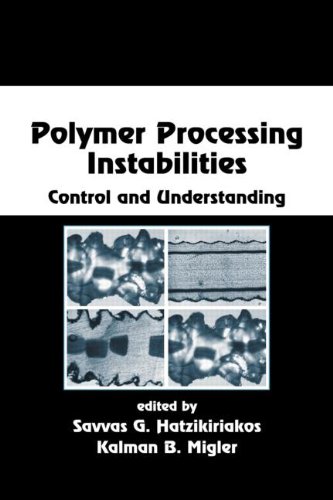
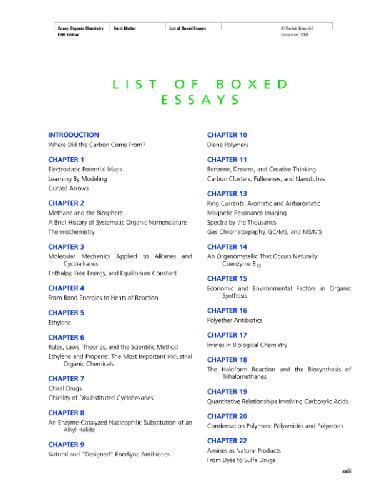
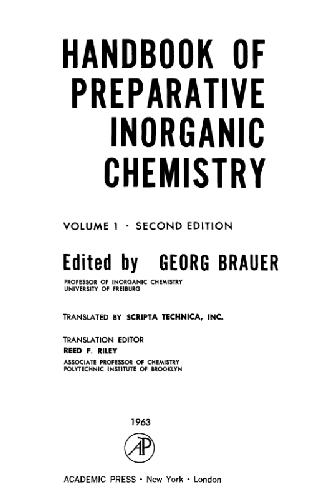

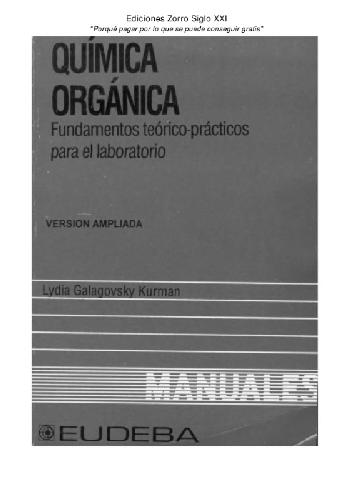
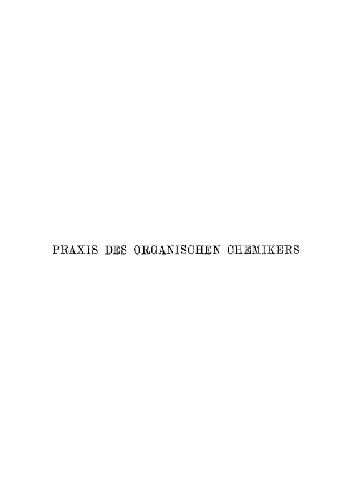

Reviews
There are no reviews yet.